Pre & Post Care Information
Learn how to prepare for your service and get all of your treatment after-care recommendations here.
Learn how to prepare for your service and get all of your treatment after-care recommendations here.
Many of our services and treatments have specific protocols, requirements, and recommendations prior to even coming into the school.
In addition, for optimal results and the quickest healing, we also have recommendations about how best to take care of your skin after your treatment.
Your student esthetician will go over all of these protocols and this information with you during your consultation and service, and these recommendations are not meant to supersede any variations of instructions given directly to you during your service. These are general pre and post-care treatment protocols and do not apply to all skin conditions, treatments, or people.
If at any time you have questions or concerns or simply need additional guidance before or after your treatment, please do not hesitate to call the school at (503) 238-1793 to speak with us.
Laser treatments, including hair reduction services and IPL treatments, deploy a pulsed-light and laser system that delivers a precise pulse of light energy absorbed by a chromophore in the skin.
The treated area may be red and swollen for 2–24 hours after the treatment or longer. Cooling the area after the treatment (for example, a cool towel or topical gel) may help reduce discomfort and swelling.
Common side effects include temporary redness (erythema) or a mild sunburn-like effect that may last a few hours to 3-4 days or longer.
Other potential side effects include but are not limited to blistering, crusting, irritation, itching, pain, burns, scabbing, swelling (edema), broken capillaries, bronzing, and acne or herpetic breakouts.
There also is a risk of resulting unsatisfactory appearance and failure to achieve the desired result.
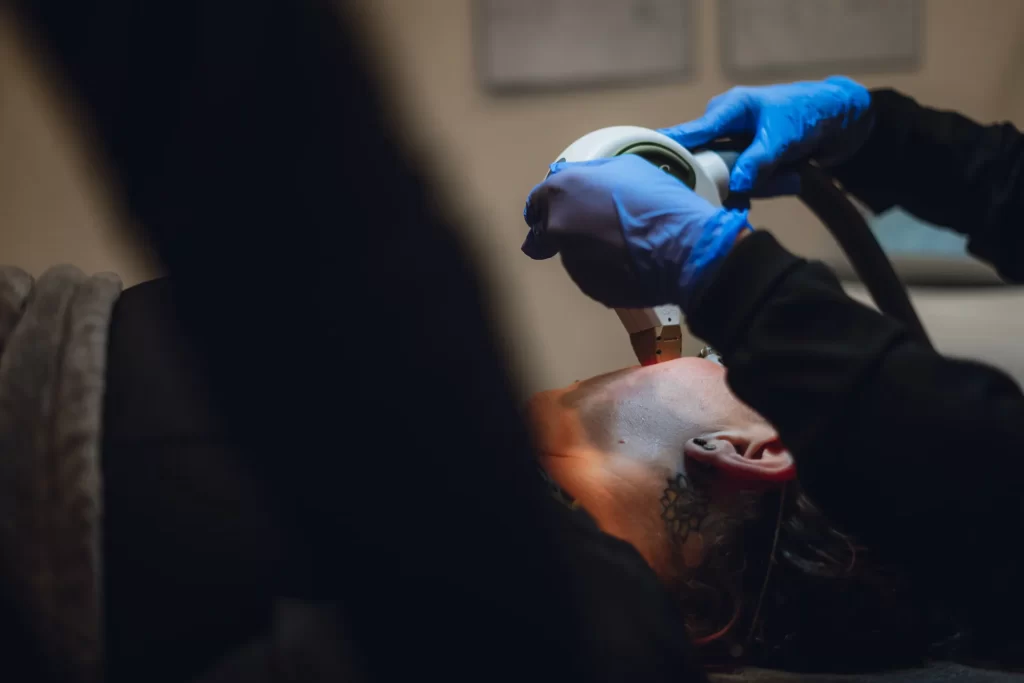
The use of a topical anesthetic is optional. It is up to the client to purchase any anesthetic they prefer to use, and the client must apply the anesthetic prior to the treatment. In a school environment, we are not able to administer or apply any topical numbing agent to clients.
If the skin in the treated area develops a brown crust, do not rub it; allow it to fall off naturally. In some cases, you may have areas that develop blisters. Do not pick or remove the scab. Apply antibiotic ointment (Polysporin, Bactroban, Fucidin, or Hydrocortisone) twice daily until healed.
Cover the site with a non-stick dressing such as Telfa pads if you go into the sun or cold. The area will heal in 5-7 days.
3-5 days after treatment, the hair left under the skin will begin to fall out.
When the area is no longer sensitive, wash the area with a washcloth or loofah brush to help the dead hair work its way out of the skin. This helps remove dead skin cells so that the hair can be shed out of the follicle more easily.
Dead hairs may take 1-3 weeks to shed out the follicles.
Do not shave the area during the first three days.
Disclaimer:
The information being provided is intended for educational and informational purposes only and does not constitute providing medical advice. The information provided on this website should not be used for diagnosing or treating a health problem or disease, and those seeking personal medical advice should consult with a licensed physician.
Always seek the advice of your doctor or other qualified health provider regarding a medical condition. Never disregard professional medical advice or delay in seeking it because of something you have read on this website.
If you think you may have a medical emergency, call 911 or go to the nearest emergency room immediately.
Your student esthetician will discuss post-procedure skincare following the treatment to help soothe, calm, and protect the skin. Continue to treat the skin gently for three days. Your regular skincare can be resumed again after day three.
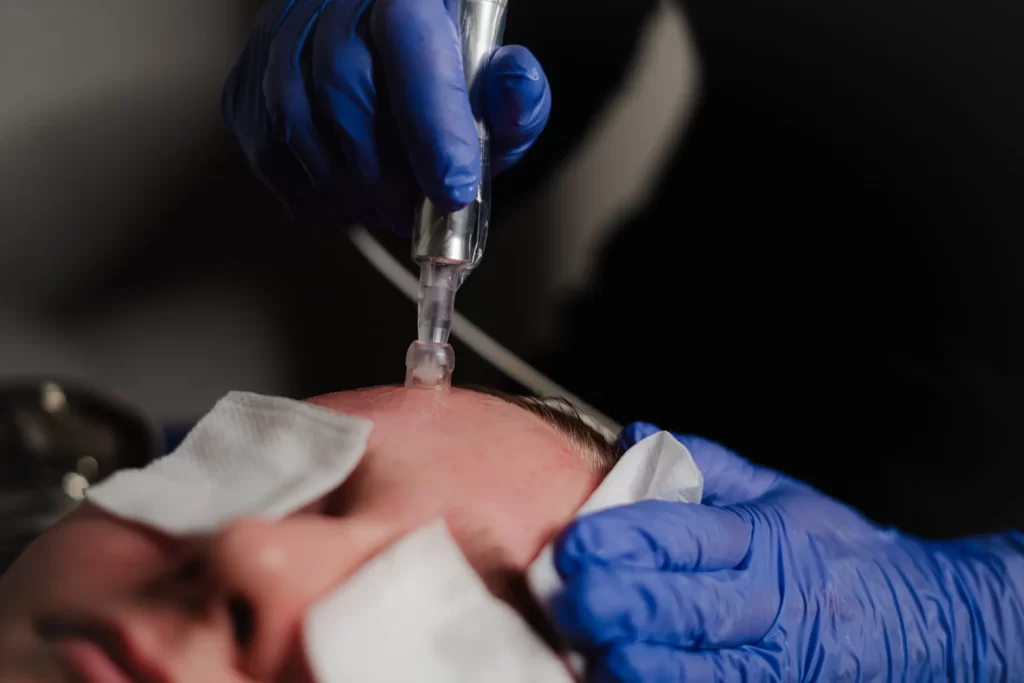
If you have received a microneedling treatment elsewhere, you may have experienced the application of a numbing cream. In a school environment, we are not able to administer or apply any prescribed topical numbing agent to clients.
Clean. Use a gentle cleanser and tepid water to cleanse the face for the following 72 hours after treatment and gently dry the treated skin. Always make sure that your hands are clean when touching the treated area.
Heal. Serum antioxidants are recommended post-treatment as their properties are ideal for helping heal the skin. These products can help soothe the skin and lessen irritation. Speak to your student esthetician for more information about these serums and for product recommendations.
Hydrate. Following your microneedling treatment, your skin may feel drier than normal. Hyaluronic Acid is an ideal ingredient to hydrate and restore the skin to perfect balance. Speak to your student esthetician for product recommendations.
Stimulate. In the days following your treatment, and as the skin starts to regenerate, collagen-stimulating peptides are ideal to continue the stimulation. Speak to your student esthetician for product recommendations.
Makeup. It is recommended that makeup should not be applied for 24 hours after the procedure. After 24 hours, you may use mineral makeup (use a clean brush).
Protect. Immediately after the procedure, apply a broad-spectrum UVA/UVB sunscreen with an SPF 25 or greater. A chemical-free sunscreen is highly recommended. Speak to your student esthetician for product recommendations.
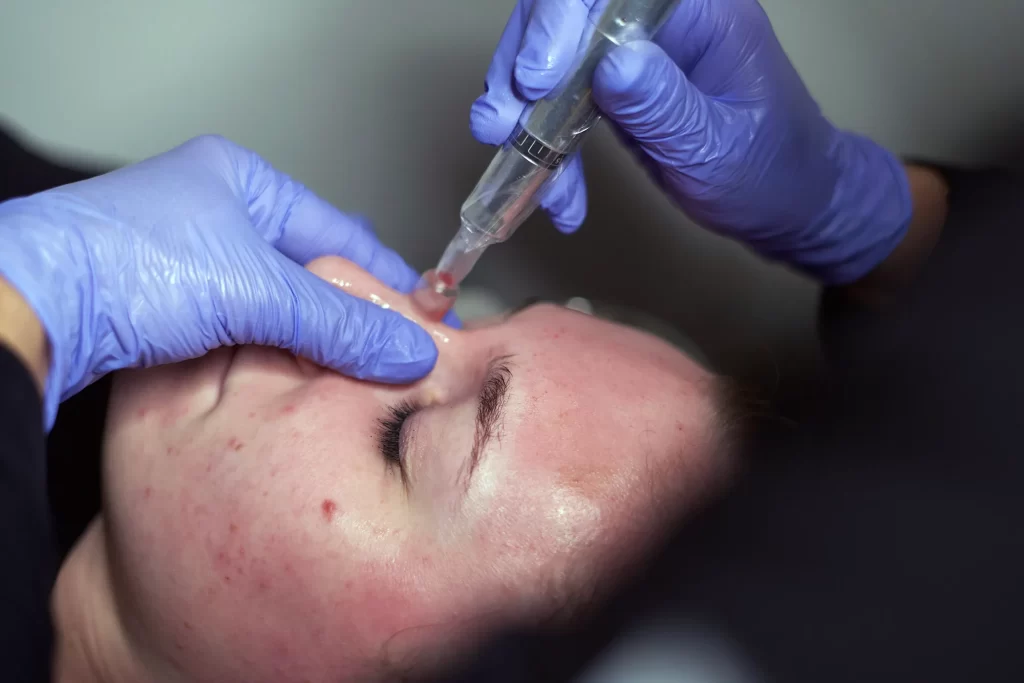
Disclaimer:
The information being provided is intended for educational and informational purposes only and does not constitute providing medical advice. The information provided on this website should not be used for diagnosing or treating a health problem or disease, and those seeking personal medical advice should consult with a licensed physician.
Always seek the advice of your doctor or other qualified health provider regarding a medical condition. Never disregard professional medical advice or delay in seeking it because of something you have read on this website.
If you think you may have a medical emergency, call 911 or go to the nearest emergency room immediately.
More sensitive skin may experience some redness after the first couple of sessions of dermaplaning. This normally goes away after 2 to 3 hours. You may experience excessive dryness or even some peeling between sessions, which may or may not be normal. Always contact the school if you have any concerns.
Dermaplaning may cause minor superficial abrasions, which may not appear until a day or two following your treatment. If this should occur, please contact the school so that we can schedule a post-treatment follow-up with you.
After your treatment, SPF 30+ MUST be worn at all times. Tanning beds should never be used.
You are investing in your skin; therefore, it is beneficial to continue to protect it long after your series of treatments is completed.
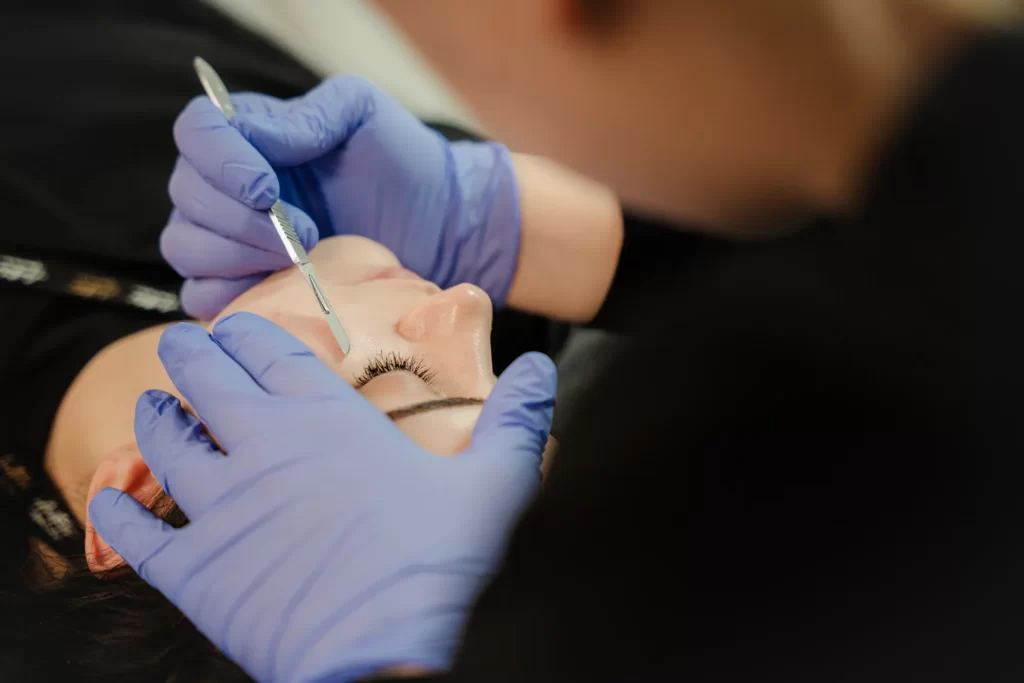
Disclaimer:
The information being provided is intended for educational and informational purposes only and does not constitute providing medical advice. The information provided on this website should not be used for diagnosing or treating a health problem or disease, and those seeking personal medical advice should consult with a licensed physician.
Always seek the advice of your doctor or other qualified health provider regarding a medical condition. Never disregard professional medical advice or delay in seeking it because of something you have read on this website.
If you think you may have a medical emergency, call 911 or go to the nearest emergency room immediately.
There is no downtime associated with radiofrequency body contouring and skin tightening treatments, but it is recommended that you drink plenty of water to help your lymphatic system move through the body.
Your metabolism may be elevated for a few days following your treatment, so don’t be surprised if you feel extra hungry.
You are free to work out moderately following your treatment which can also help the lymphatic system move quicker. You may notice some swelling and tenderness in the treated area that will return to normal within a few days.
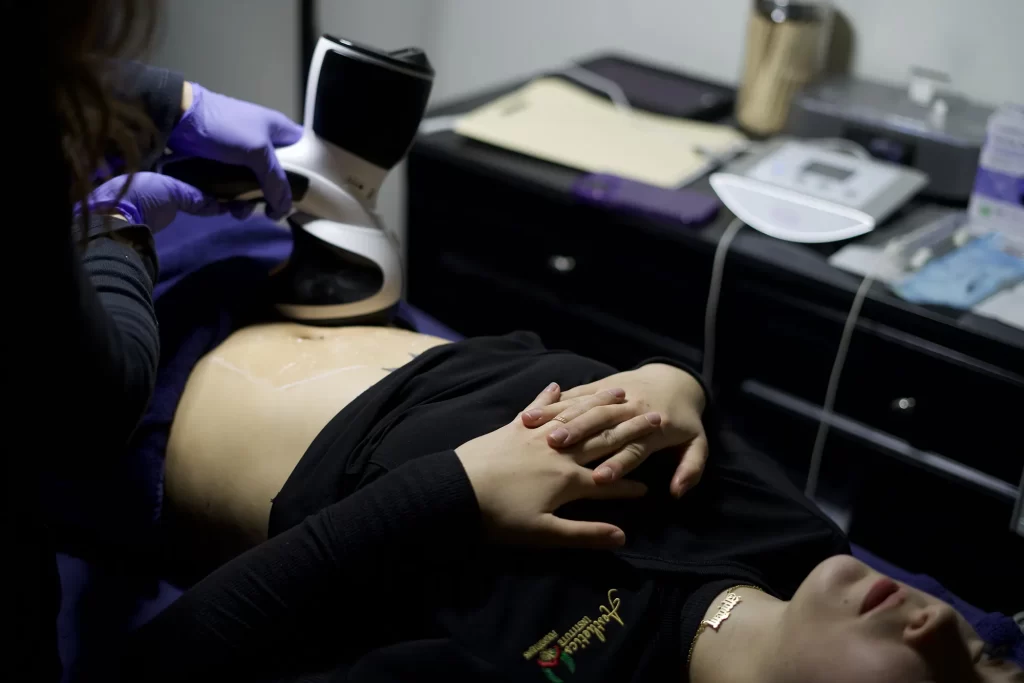
Disclaimer:
The information being provided is intended for educational and informational purposes only and does not constitute providing medical advice. The information provided on this website should not be used for diagnosing or treating a health problem or disease, and those seeking personal medical advice should consult with a licensed physician.
Always seek the advice of your doctor or other qualified health provider regarding a medical condition. Never disregard professional medical advice or delay in seeking it because of something you have read on this website.
If you think you may have a medical emergency, call 911 or go to the nearest emergency room immediately.
The Aesthetics Institute offers clients a variety of both basic and advanced chemical peels.
The information provided here covers generic recommendations for all of our chemical peels offered at the school, but the instructions you receive from your student esthetician may be different based on the specific chemical peel service you received.
As always, please feel free to call the school if you have any questions or concerns about your treatment or service.
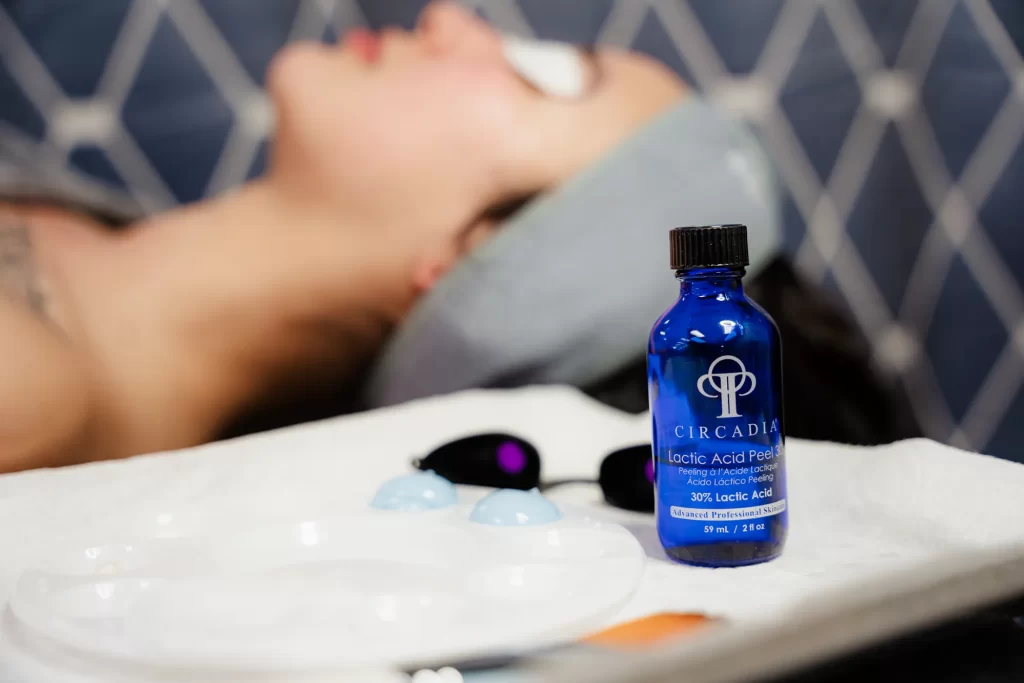
You will experience redness and flaking from 5 to 14 days after the treatment.
Avoid direct sun exposure and tanning beds for 1-2 months and throughout the course of the treatment so as to reduce the chance of dark or light spots. Use sunscreen SPF 25 or higher at all times throughout the treatment when going outside.
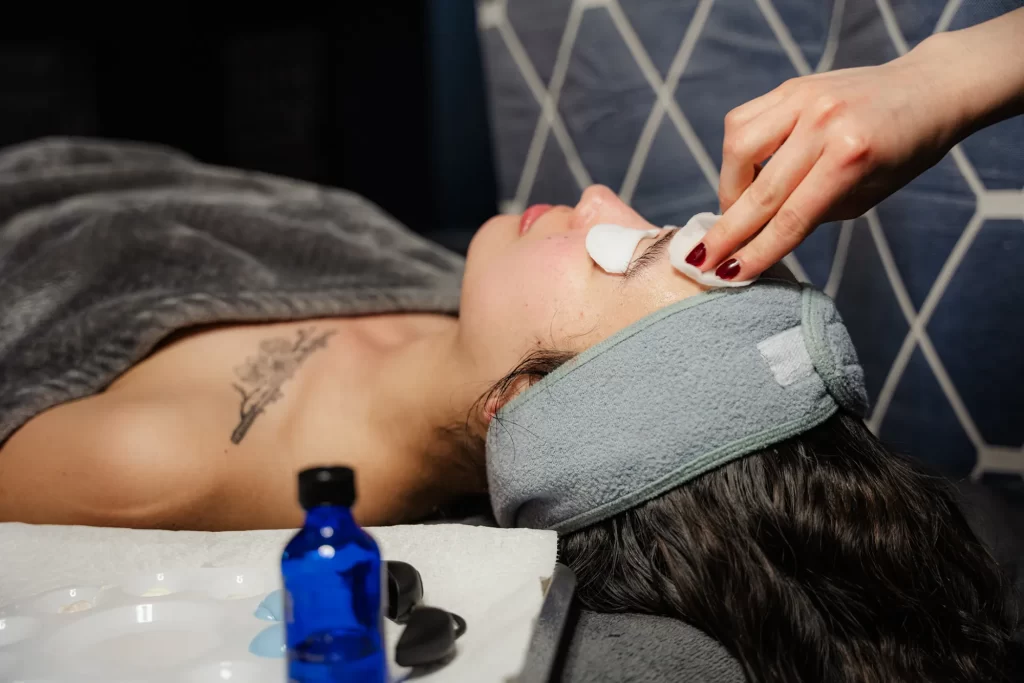
Below are general guidelines of what may be expected each day after your chemical peel service. These are meant as an overall baseline, and your specific experience may vary depending on the treatment you received and the condition of your skin prior to the service.
Do not apply anything to the skin. Your skin will appear sunburned today and will continue to look redder as the day continues. It will begin to feel tight, like you have a sunburn.
You may also experience itching or mild burning as the peel penetrates deeper into the skin. You can help to alleviate this sensation by taking Benadryl or Zantac (for itching) and aspirin or Tylenol (for discomfort), as needed.
You will want to avoid wearing makeup or tight-fitting glasses for the first day or two. Pressure from the nosepiece may cause the deepening of the peel in that area.
Your skin will continue to feel very tight. The top layers of the skin are dehydrating. You will look like you have an uneven sunburn/tan.
You may still feel comfortable in public today. By the end of the day, your skin may begin to flake, usually starting between your eyes, around your mouth, and nose. Sun-damaged spots may turn darker prior to peeling.
Rinse your face with water today. Use only your hands. Cool or tepid water generally feels best. Do not use a cleanser or moisturizer.
DO NOT PEEL THE SKIN. You may reapply Circadia’s Post Peel lotion, mild hydrocortisone cream, or Aquaphor if any area is irritated. Speak to your student esthetician for other product recommendations.
Your skin will flake, peel and feel very tight today. DO NOT peel the skin at any time. If you were to peel skin that is not ready to come off, you could cause scarring. You may carefully use manicure scissors to clip any hanging skin if necessary.
Today and tomorrow, you may want to avoid making social plans if you feel self-conscious about how your skin appears while healing.
Begin using a gentle cleanser today and a strong hydrating cream. Speak to your student esthetician for product recommendations.
If you go outside, use sunscreen with an SPF 25 or higher. Avoid using retinoids, retinol, acids, and astringents. You must completely avoid the sun during this time. This is the last day you may use hydrocortisone on the irritated areas.
The majority of peeling takes place between days 3 and 4. Continue with cleansing and moisturizing. Some areas will have completely peeled, and other areas may not have peeled at all. This is normal.
You may resume waxing, tweezing, or depilatory creams during this week. By the end of the second week, you should be able to tolerate glycolic, salicylic, and retinol or retinoid products. Speak to your student esthetician for product recommendations. You will notice your skin is pink for about one more week.
Disclaimer:
The information being provided is intended for educational and informational purposes only and does not constitute providing medical advice. The information provided on this website should not be used for diagnosing or treating a health problem or disease, and those seeking personal medical advice should consult with a licensed physician.
Always seek the advice of your doctor or other qualified health provider regarding a medical condition. Never disregard professional medical advice or delay in seeking it because of something you have read on this website.
If you think you may have a medical emergency, call 911 or go to the nearest emergency room immediately.
After your laser tattoo removal service, the treated area may be red, swollen, bruised, or blistered, with a crust or scab.
Cooling the area after the treatment (for example, a cool towel or topical gel) may help reduce discomfort and swelling.
Other potential side effects include but are not limited to crusting, irritation, itching, pain, burns, scabbing, swelling (edema), broken capillaries, bronzing, and acne or herpetic breakouts.
There also is a risk of resulting unsatisfactory appearance and failure to achieve the desired result.
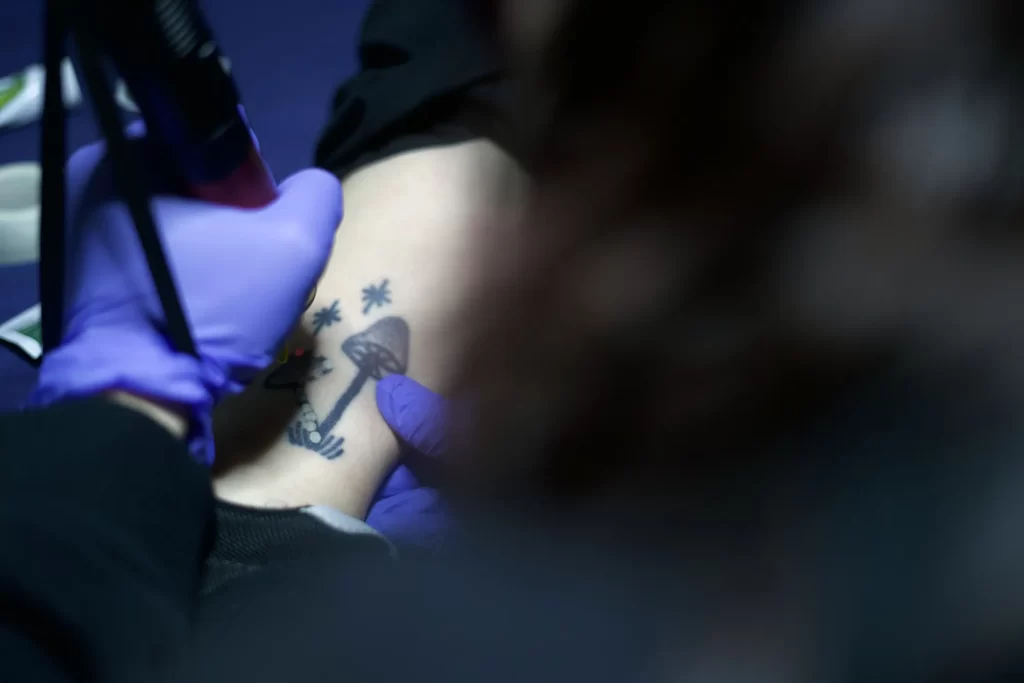
Disclaimer:
The information being provided is intended for educational and informational purposes only and does not constitute providing medical advice. The information provided on this website should not be used for diagnosing or treating a health problem or disease, and those seeking personal medical advice should consult with a licensed physician.
Always seek the advice of your doctor or other qualified health provider regarding a medical condition. Never disregard professional medical advice or delay in seeking it because of something you have read on this website.
If you think you may have a medical emergency, call 911 or go to the nearest emergency room immediately.